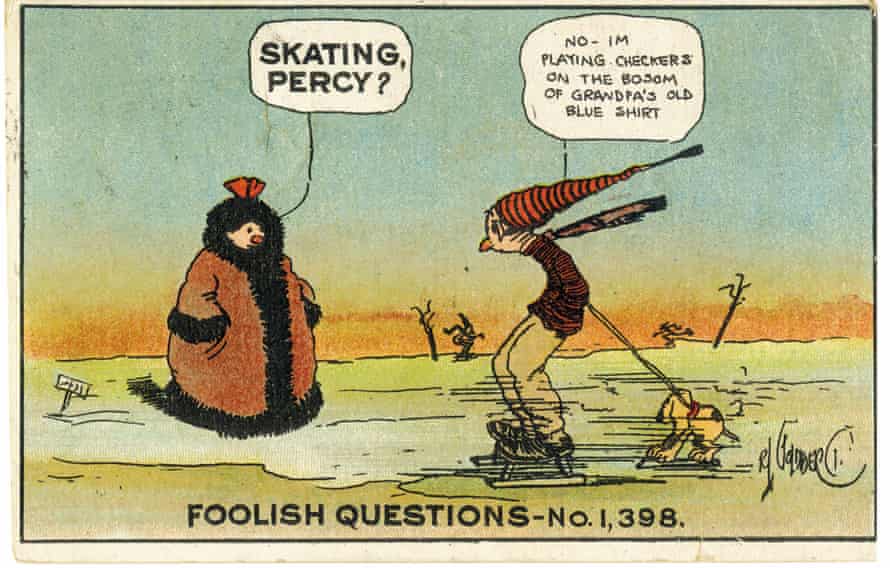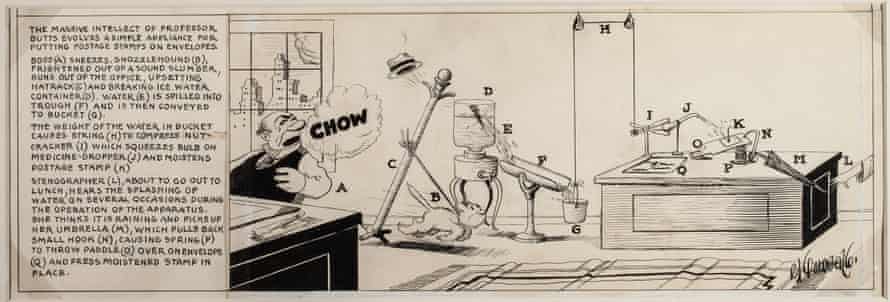Cartoons Drawings Made Into Xxx
There's a cartoon hanging in the Queens Museum in New York – a drawing of a man with a shovel, digging through piles of paper.
The papers symbolize government corruption, but they wind up in the dump. The caption explains: "Senate investigating committee digs up huge mass of evidence which passes before startled eyes of indignant but apathetic public, and then slides into obscurity, making room for next investigation."
From Donald Trump's tax returns to the Ukraine scandal and the impeachment inquiry, this has never felt more relevant. But the cartoon is from the 1940s, by the New York cartoonist Rube Goldberg, and it's on view as part of The Art of Rube Goldberg, a survey which opened this weekend and runs until 9 February.
The pioneering 20th-century artist created more than 50,000 cartoons in a career that spanned seven decades. This is the first retrospective in 49 years to look at Goldberg's work. It also highlights his overlooked career as a Pulitzer prize-winning political satirist.
"Political cartoons were not his main output, but some of his work remains so relevant," said the museum's assistant curator, Sophia Marisa Lucas. "He was seeking to find humor in some things, as a clever opportunity for relief."
A traveling exhibition organized by Art & Artists the retrospective features Goldberg's views on society in the 1930s and 1940s, skewering Adolf Hitler, commenting on the inflation of the US dollar and addressing the dire effects of war.
Goldberg wasn't primarily a satirist but made a significant impact with his political cartoons. He received a Pulitzer prize in 1948 for a drawing called Peace Today, showing an atomic bomb teetering towards the brink of destruction.

Goldberg was born in San Francisco in 1883, moved to New York City in 1907 and got a job at the Evening Mail in 1908 with a cartoon series called Foolish Questions. It was based on the premise: "Ask a stupid question, get a stupid answer."
In one cartoon, a woman asks her husband, who just came in from the rain: "Why, dearie, did you get wet?" He answers: "Of course not – the rain is dry today." The series was so popular, readers started mailing in their own foolish questions for Goldberg to answer in the series, which ended up in a book and merchandise such as a deck of cards.
"The exhibition follows progression of his hand," said Lucas. From the cartoons he did at the beginning of his career, it segues into his social commentary. "Goldberg commented primarily on human nature."
Throughout the 1910s, Goldberg was a standup comedian in New York, toured with a troupe of comics for a vaudeville show and used slapstick in his cartoons. A new section in this particular exhibition is devoted to vaudeville – one of his biggest influences.
"What we did differently here, for this exhibition, was pull out another section on the influence of vaudeville on his work," said Lucas. "It's history that felt buried but had a significant influence."
As Goldberg's cartoons became syndicated by national newspapers in 1922, he started to earn $200,000 a year and reached an audience of millions.

From 1914 to 1964, he ran a series called The Inventions of Professor Lucifer Gorgonzola Butts. Before becoming a cartoonist, Goldberg studied engineering, and here put his knowledge to work. He turned seemingly useless tasks into complicated chain reaction invention machines (in one, a car gets a windshield wiper from a dog's wagging tail; in another, there's a 20-step way to brush your teeth).
It didn't stop on paper, either. Goldberg's invention machines made it to Hollywood. He created a feeding machine that allowed Charlie Chaplin to sip on soup without raising his arms in the 1936 film Modern Times.
Much later, his breakfast machines were featured in blockbuster films, including Chitty Chitty Bang Bang, where a toy train pushes plates along a kitchen, while in Pee-wee's Big Adventure, a statue of Abraham Lincoln flips pancakes (which end up stuck to the ceiling).
Goldberg didn't get into political cartoons until the 1930s. "You see signs of his political cartoons in his early work, but it's more about personality, bureaucracy, the human condition," said Lucas.
In 1938, when Goldberg was 55, he became the New York Sun's political cartoonist, producing three cartoons a week on topics including corruption, poverty and crime. "They weren't the latest news; it was reflections on tax cuts, the war, broad issues," said Lucas. "Not urgent daily news."
Through the 1940s and 1950s, he commented on government austerity throughout the second world war, primary elections, lying presidents and the Middle Eastern conflict. He showed an American taxpayer getting bonked on the head and compared vote counting to a carnival game. "When all clerks are unconscious, the election is over," Goldberg wrote.
One cartoon from the 1940s, called The Numbers Blues, shows a man standing sheepishly under rows of numbers hovering above his head – from his phone number to social security and bank account – imagining himself as a jailbird.
"Political cartoons were easier for me than the inventions because they were almost pure idea and the draftsmanship was relatively simple," Goldberg once said, "I could do two political cartoons a day, but an invention sometimes required a week."

His creative process might have been easier, but the world around him became complicated. During the second world war, Goldberg faced intense criticism for his political cartoons and received a lot of hate mail. Since he was the son of a Jewish immigrant from Germany, he advised his two sons who lived with him in New York, George and Thomas, to change their surname from Goldberg to George.
In the last chapter of his newspaper career, Goldberg left the Sun in 1949 to become a cartoonist for the New York Journal, staying until his last cartoon was published in 1964, when he was 80.
Once drawing became too difficult in old age, he turned to sculpture. Along the way, he also made books and hosted his own radio and TV shows.
Three weeks before he passed away in 1970, Goldberg had a retrospective at the National Museum of American History in Washington. Photos from the opening show the artist, aged 87, in a sharp suit and bow tie, white-haired and in black-rimmed glasses, chatting with guests alongside his wife. The exhibition was called Do It the Hard Way, and as one of his last masterpieces, he created a cartoon foretelling the future – in 2070, he predicted women would still be fighting for equal rights.
The walls were covered with Goldberg's drawings. Large cutouts of speech bubbles hovered above them, as if life itself were a cartoon.
"He was a commercial cartoonist for major publications, maximizing the opportunity in the golden age of newspapers," said Lucas. "But his main goal is that he was a humorist."
-
The Art of Rube Goldberg is on show at Queens Museum in New York until 9 February
Cartoons Drawings Made Into Xxx
Source: https://www.theguardian.com/artanddesign/2019/oct/09/rube-goldberg-cartoons-pulitzer-queens-museum-new-york
0 Response to "Cartoons Drawings Made Into Xxx"
Post a Comment